Tampa CPR &
AED Training & Certification Class
When you
take a Cardiopulmonary Resuscitation (CPR) training & CPR AED (Automated External Defibralltor) training and certification class
in tampa, you can make the difference between
life and death during a medical emergency.
It typically
takes less than four hours to learn CPR in tampa and it is the most important medical course you
can take. CPR is performed on victims who are not breathing and do not have a
pulse. There
is no greater emergency.
CPR has the
effect of getting much-needed oxygen to the brain, where it can keep the nerves of the brain alive long
enough for someone to get the patient's heart beating again.
The average national
response time for “Emergency Rescue” is 5 to 10 minutes including the Tampa Bay area, but could be as long
as 20 minutes. In Tampa Florida due to the large volume of 9-1-1 calls, it is not uncommon for response
times to go over the 5 minute mark.
Brain cells start dying
immediately without oxygen and irreversible brain damage starts somewhere around 4 minutes. Without
immediate CPR the chances of survival are small. The
question that must be asked is; what kind of life style will that person lead if someone doesn’t
intervene?
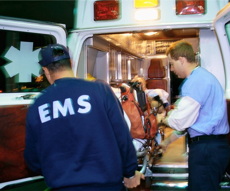 47% of all heart attack and stroke victims die before emergency rescue
arrives. 47% of all heart attack and stroke victims die before emergency rescue
arrives.
Is your Tampa
based business prepared? If you or a coworker suffers from a heart attack or sudden cardiac arrest, will
someone be prepared to perform CPR and use an AED or provide supplemental
oxygen? We come to your Tampa facility and train your staff so they are prepared in the event of
an emergency!
Make your
Tampa workplace a vital link in the “Chain of Survival.”
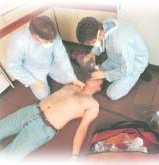 In the event of Sudden Cardiac Arrest (SCA), the victim requires an electric shock
from a defibrillator to the heart. It is the only known
thing that a layperson can do that will save their life. Using an AED & starting
Cardiopulmonary Resuscitation (CPR) within the first two minutes of cardiac arrest improves the victim’s
chances of survival by 90 percent. For each minute that passes, chances of survival decrease approximately 10
percent. In the event of Sudden Cardiac Arrest (SCA), the victim requires an electric shock
from a defibrillator to the heart. It is the only known
thing that a layperson can do that will save their life. Using an AED & starting
Cardiopulmonary Resuscitation (CPR) within the first two minutes of cardiac arrest improves the victim’s
chances of survival by 90 percent. For each minute that passes, chances of survival decrease approximately 10
percent.
The average national response time for “Emergency Rescue” is 5 to 10 minutes in a metropolitan area in th U.S. If
9-1-1 rescuers arrive at the location in 5 minutes, by the time they get their equipment, get in your building, get
to the victim, and analyze the situation it will be several more minutes before the first Life Saving Shock is
delivered. If chances of survival go down nearly 10% per minute, can you afford to wait for Emergency
Rescue? Don't wait, become a link in the "Chain of Survival."
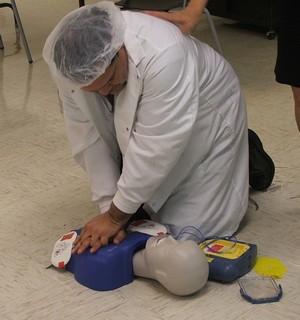 Getting certified in our CPR AED class is fun and easy. With Pulse America’s
complete AED solution, you'll have the peace of mind of knowing you have the best technology, ease of use, as
well as Pulse America’s hands on style of training to help make your
workplace safer. Getting certified in our CPR AED class is fun and easy. With Pulse America’s
complete AED solution, you'll have the peace of mind of knowing you have the best technology, ease of use, as
well as Pulse America’s hands on style of training to help make your
workplace safer.
Sudden
Cardiac Arrest and Heart Attack
Most sudden
cardiac arrests are due to abnormal heart rhythms called arrhythmias. The most common arrhythmia is ventricular
fibrillation (VF), in which the heart’s electrical impulses suddenly become chaotic and ineffective. Blood flow to
the brain abruptly stops; the victim then collapses and quickly loses consciousness. Death usually follows unless a
normal heart rhythm is restored within minutes.
A heart attack is different from sudden cardiac arrest although sometimes a heart attack
can trigger SCA. A heart attack occurs when one of the heart’s major blood vessels becomes blocked, shutting off
blood flow and oxygen to the heart muscle. Without oxygen the heart muscle starts to die, producing pain and
other symptoms. A heart attack may lead to a cardiac arrest.
In simple terms, a heart attack is a “plumbing” problem
caused when a vessel becomes clogged. Sudden cardiac arrest is an electrical problem. Unlike a sudden
cardiac arrest victim, a heart attack victim is often awake and can talk
despite having chest pain or pressure. The most common symptom of a heart attack is severe pain or pressure in
the center of the chest.
Sudden cardiac arrest strikes people of all ages and fitness levels,
usually without warning. Many of these lives could be saved if:
- Bystanders act promptly to phone 911 and begin CPR, and
- Trained personnel provide
defibrillation within 3 to 5 minutes.
Chain of
Survival
More people survive sudden cardiac arrest
when a certain sequence of events happens as quickly as possible. This series of steps is called the Chain of
Survival.
- Early Access: Recognizing that a cardiovascular emergency exists and immediately
notifying the EMS (Emergency Medical Services) system is a key element. In most communities, phoning 911
activating the EMS system.
- Early CPR: Starting CPR immediately after cardiac arrest to circulate
oxygen-rich blood to vital organs buys time for the victim until defibrillation can be given.
- Early Defibrillation: Defibrillation of the victim as soon as equipment arrives.
- Early Advanced Care: Trained healthcare providers arriving quickly to administer
advanced lifesaving interventions.

To schedule a CPR Training & Certification Class in the Tampa area, call (888)
347-8573
We service the following communities in the Tampa Florida
area for CPR/AED training:
Hillsborough County Florida - Tampa,
Plant City, Temple Terrace
Pinellas County Florida - Belleair, Belleair Beach, Belleair Bluffs, Belleair
Shore, Clearwater, Dunedin, Gulfport, Indian Rocks Beach, Indian Shores, Kenneth City , Largo, Madeira
Beach, North Redington Beach , Oldsmar, Pinellas Park , Redington Beach , Redington Shores,
Safety Harbor , Seminole, South Pasadena, St. Pete Beach , St. Petersburg, Tarpon Springs, Treasure
Island
| 

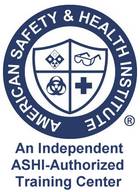

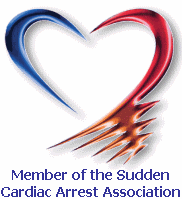
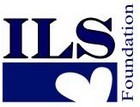
 47% of all heart attack and stroke victims die before emergency rescue
arrives.
47% of all heart attack and stroke victims die before emergency rescue
arrives. In the event of Sudden Cardiac Arrest (SCA), the victim requires an electric shock
from a defibrillator to the heart. It is the only known
thing that a layperson can do that will save their life. Using an AED & starting
Cardiopulmonary Resuscitation (CPR) within the first two minutes of cardiac arrest improves the victim’s
chances of survival by 90 percent. For each minute that passes, chances of survival decrease approximately 10
percent.
In the event of Sudden Cardiac Arrest (SCA), the victim requires an electric shock
from a defibrillator to the heart. It is the only known
thing that a layperson can do that will save their life. Using an AED & starting
Cardiopulmonary Resuscitation (CPR) within the first two minutes of cardiac arrest improves the victim’s
chances of survival by 90 percent. For each minute that passes, chances of survival decrease approximately 10
percent. Getting certified in our CPR AED class is fun and easy. With Pulse America’s
complete AED solution, you'll have the peace of mind of knowing you have the best technology, ease of use, as
well as
Getting certified in our CPR AED class is fun and easy. With Pulse America’s
complete AED solution, you'll have the peace of mind of knowing you have the best technology, ease of use, as
well as 